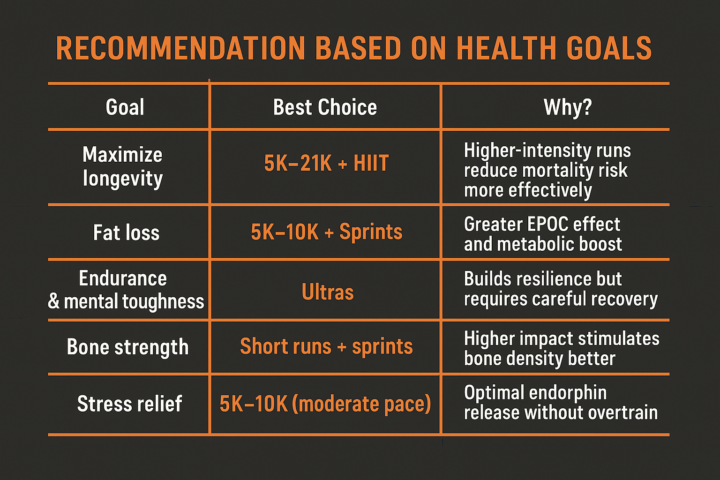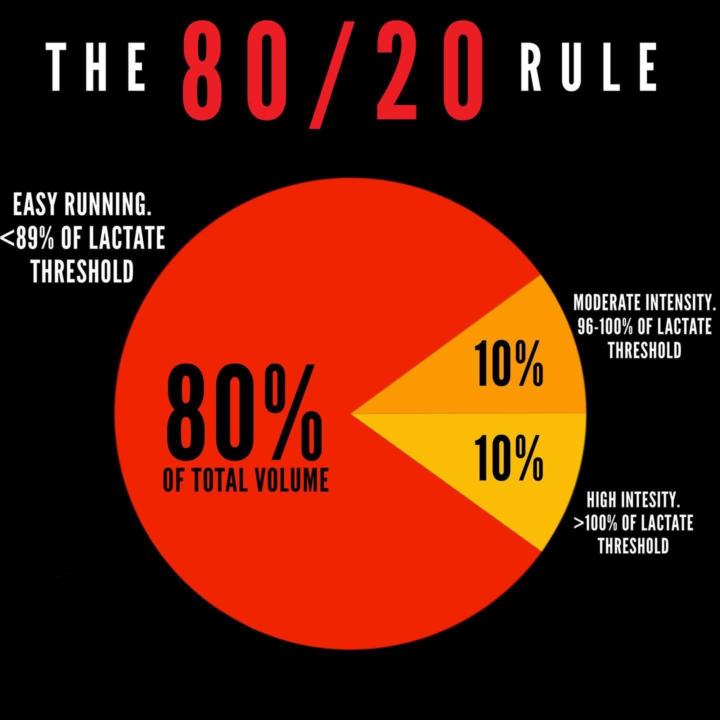Activity
Mon
Wed
Fri
Sun
Jan
Feb
Mar
Apr
May
Jun
Jul
Aug
Sep
Oct
Nov
Dec
What is this?
Less
More
Owned by Miriam
Join a powerful sisterhood! :) Achieve your goals faster and reach your best version with exclusive sessions and workshops. Join now! 🚀
Memberships
NeveReady Run Club
537 members • Free
Fucketlist Life
5.5k members • Free
Kourse (Free)
114.8k members • Free
Fucketlister Inner Circle
23 members • $79/m
Flows
248 members • Free
wood and stone
26 members • Free
Better Runner
44 members • Free
The Storyteller's Path
295 members • Free
Brand with Sina
11k members • Free
4 contributions to Better Runner
Ultras Vs. Long Distance running
📜Long-distance running, or endurance running, is a form of continuous running over distances of at least 3 km (1.9 mi) Did you know that? You don't have to run an ultra or a marathon to name yourself long- distance runner. 🌄 So what I want to talk about is the benefits of different running disciplines for our health, fitness and longevity. If you are thinking about running as a tool to improve these, I have put together some facts to help you. 💭 Cardiovascular & Longevity Benefits 💖 Shorter Distances (5K–21K) - Improves VO₂ max through speedwork, intervals, and tempo runs. - Boosts heart efficiency via high-intensity bursts. - Promotes stronger cardiovascular adaptation in less time. Ultra-Running: - Builds aerobic endurance over long durations. - Caution: Prolonged running may increase oxidative stress and cardiac strain in some, though research varies. - Less effective for VO₂ max improvement than speed-focused training. 🔥 Metabolic & Weight Management Shorter Distances (5K–21K) - HIIT and tempo runs trigger EPOC (afterburn), burning more calories after the workout. - More effective for fat loss due to higher intensity and hormonal response. - Boosts insulin sensitivity and metabolic rate. Ultra Running - Promotes fat oxidation as the primary fuel source. - Improves metabolic flexibility, especially in fasted or low-carb states. - ⚠️ May elevate cortisol (stress hormone) if recovery isn’t sufficient, which can hinder weight loss and cause fatigue. 🦴 3. Musculoskeletal & Injury Risk Shorter Distances (5K–21K) - Lower risk of injury due to less repetition and impact. - Speedwork (like hill sprints) applies bone-loading stress, stimulating bone density (Wolff’s Law). - Good for long-term joint health if done with proper form. Ultra Running - Higher risk of overuse injuries (e.g., tendinitis, stress fractures) due to long, repetitive impact. - Common strain points: knees, hips, feet. - Well-trained ultra-runners often adapt, but recovery and conditioning are crucial.

🏃♂️ Long Runs
In professional sports, there are cases where long training runs of 45-50 km improved a marathon runner's personal record by almost 10 minutes! While this doesn’t mean you should immediately start running 45 km, a long Sunday run can indeed be very beneficial. What is a Long Run? 🏃♀️💨 A long run is any training session that lasts 1.5 hours or more. It’s not just for marathoners—it’s important for runners of all levels! Why Do We Need Long Runs?📊 Long runs aren’t just about logging miles. They help: - Increases mitochondria and capillaries in muscle cells - Enhance cardiovascular efficiency - Greater glycogen storage in muscles and liver - Strengthened musculoskeletal system - Develop Fat Burning: Your body learns to use fat as a primary energy source, saving glycogen for when you really need it. - Aerobic Endurance: They improve your cardiovascular system, making you a more efficient runner. - Strengthen Your Mind: Long runs teach you to push through fatigue, monotony, and the urge to quit. - Build Character: They train perseverance, discipline, and mental toughness. How Much Should You Run?⏲️ Experienced coaches suggest that long-distance runs should make up 20-25% of your weekly mileage. For example: - If you run 60 km per week, aim for 12-15 km long runs. - If you run 120 km per week, aim for 25-30 km long runs. - For a half-marathon, aim for 18-20 km - For a marathon, the distance increases to 24-35 km Fueling Your Long Run 🧁🥑 - Before: Have a light breakfast to fuel your body. - During: For runs over 90 minutes, consider water or an isotonic drink to stay hydrated. - After: Refuel with carbs and protein within 30 minutes to kickstart recovery. Questions time : Have you tried incorporating long-distance runs into your training? If so, how has it impacted your endurance and confidence ❓ What’s your favorite way to make long runs more enjoyable (e.g., music, podcasts, running with friends)❓ What was your longest run in last 3 months ❓

0 likes • Mar 20
Long runs are a game-changer! They’ve definitely helped improve my endurance and mental strength. I’ve noticed I can push through fatigue way better now. 2. Running clubs are the best because I feel like I can push myself further:)🔥 1. I think my longest run in the last three months was 2 weeks ago, 11 km.😅
If you struggle with Shin Splints
Shin Splints (Medial Tibial Stress Syndrome): Pain along the inner edge of the shinbone (tibia) caused by inflammation of the surrounding tissues. The pain is typically felt between the mid-shin and ankle joint. A recent study (link to research) included 40 runners who had suffered from shin splints for at least one month. None of the participants were overweight, ruling out a potential contributing factor to this injury. Both groups followed an 8-week tailored training program. The experimental group also added functional strength training for the hip abductor muscles, including exercises like: - Single-leg bridges video 1 - Lateral step-ups video 2 Results after 8 weeks: The group performing hip abductor exercises showed reduced muscle weakness, improved movement patterns, and a lower risk of shin splint recurrence. Strengthening hip abductors (as in the study) and tibialis posterior, while improving calf flexibility and core stability, can reduce shin splint risk. Weakness in these areas disrupts running mechanics, overloading the tibia.
Running by the 80/20 Rule: 10 Key Ideas
🔰How to Run Faster by Slowing Down To improve your running, you need to slow down. Consistency is key to progress, and running hard every day is not sustainable—it’s exhausting both mentally and physically. Many amateur runners push themselves too hard, often because they’re obsessed with high-intensity workouts. But here’s the secret: you get faster by running slowly most of the time. 🔰Why Slow Running Works Research shows that the best runners in the world spend about 80% of their training time at a low intensity—a pace where you can still hold a conversation. By limiting hard workouts, these runners avoid burnout and perform better than those who are constantly tired. 🔰The Leap of Faith The idea of running slowly to get faster isn’t new, but many runners still don’t believe it. Why? Because it feels unnatural. Most runners want to push themselves out of their comfort zone every time they train. But for beginners or those carrying extra weight, the "anaerobic threshold" (where running gets hard) kicks in almost immediately. This leaves little room for low-intensity training. However, runners who embrace slow running see amazing results: their training becomes less exhausting, and their performance improves. 🔰The 80/20 Rule The 80/20 rule is simple: spend 80% of your training at low intensity and 20% at moderate to high intensity. This balance helps you build endurance without overtraining. Many runners think they’re running easy, but they’re actually pushing too hard, which slows their progress. 🔰The Perception Problem Humans are wired to finish tasks quickly, so even when we’re supposed to run at an easy pace, we often speed up unconsciously. This happens because we want to end the discomfort as soon as possible. But running at a moderate intensity all the time isn’t effective—it leads to fatigue and limits improvement. 🔰Intensity Blindness Most runners don’t realize they’re running too hard. To fix this, try a running detox: spend a week running at an extremely slow pace. This will help you reset and understand what true low-intensity running feels like. Ignore your pace and heart rate—just focus on how it feels. If you think you’re running slow, slow down even more.

1-4 of 4
Active 5d ago
Joined Jan 8, 2025
Powered by


